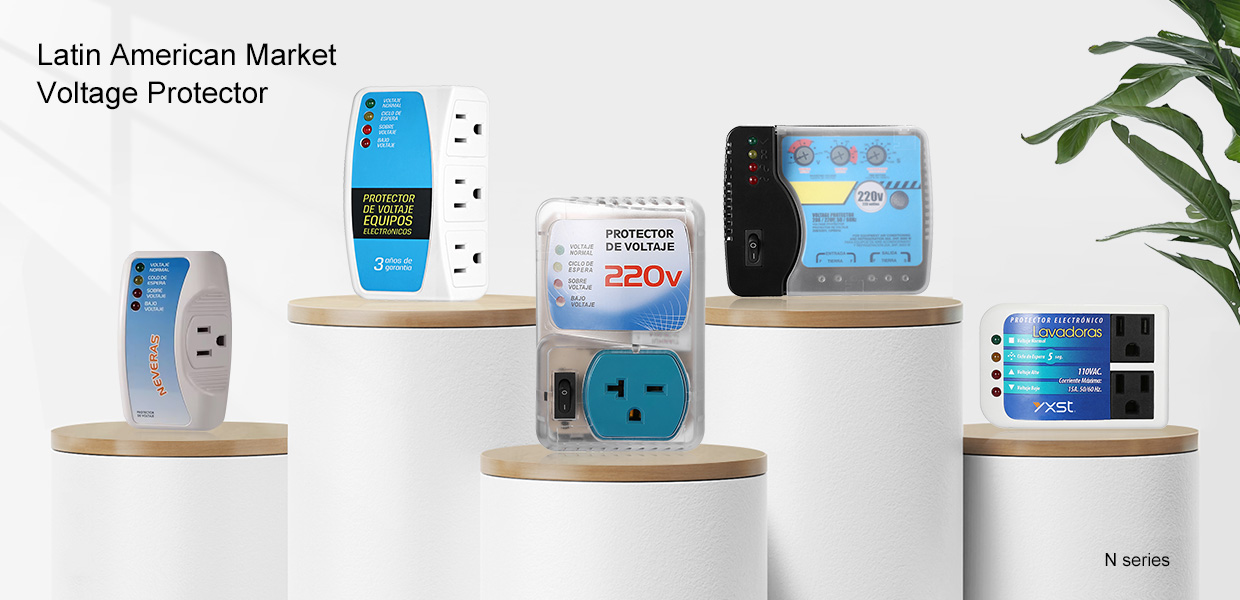You should know that the following situations occur: such as the thunderstorm season, and the occasional power outages that occur all year round, which makes consumers start to think about how to protect home electronic devices. Then, through searching on the Internet, I found an automatic voltage protector(AVP), which is used to prevent excessive voltage (such as lightning strikes, and transient currents) from damaging equipment. Automatic voltage protector factory tell you, that they protect equipment from power surges caused by lightning and other electrical disturbances.

The purpose of manufacturing automatic voltage protector
The purpose of voltage protectors is to protect electrical equipment from overvoltage and low voltage and to ensure the stable operation and power safety of the power system.
Voltage protectors are an important type of electrical equipment protection device, which mainly includes two types: overvoltage protectors and low voltage protectors. Overvoltage protectors are mainly used to prevent the voltage in the power system from exceeding the rated value, which may be caused by operating overvoltage, atmospheric overvoltage, or overvoltage caused by switch operation. These excessive voltages may damage the insulation of electrical equipment and even cause equipment damage or instability in the power system. Therefore, the design purpose of overvoltage protectors is to take prompt measures, such as cutting off the circuit, to protect the equipment from damage when the voltage exceeds the preset safety threshold.
AVP Automatic Voltage Protector Factory tells you,Low voltage protectors are mainly used to deal with the situation of too low voltage in the power system. When the voltage in the power system is too low, equipment such as motors may burn out due to excessive current. Low voltage protectors can cut off the power supply when the voltage is too low, prevent the equipment from being damaged by low voltage, and thus protect the normal operation of the equipment.
The purpose of the voltage protector is to ensure the stable operation of the power system by providing overvoltage and low voltage protection, and to prevent electrical equipment from being damaged due to excessively high or low voltage, thereby improving the reliability and safety of the power system.

The working principle of automatic voltage protectors is based on several core components:
Metal oxide varistor (MOV): When the voltage exceeds the critical value of the MOV, the resistance of the MOV is greatly reduced, causing the excess current to flow to the ground wire, thereby protecting the connected equipment. After the voltage returns to normal, the resistance of the MOV will return to a high resistance value.
Gas discharge tube (GDT): At high voltage moments, the gas inside the GDT is broken down, forming a conductive channel that guides the current to the ground wire, preventing the current from damaging the electronic equipment. After the voltage is restored, the GDT will return to the insulation state.
Transient voltage suppression (TVS) diode: When the voltage exceeds the breakdown voltage of the TVS diode, it quickly turns on, limiting the excess current to a safe range and protecting the circuit from damage.
These components are used together to respond quickly to abnormal voltages and provide effective protection.

How to use an automatic voltage protector
Using a voltage protector correctly can effectively protect electronic devices from voltage fluctuations and surges. Here are some key ways to use it:
- Choose the right voltage protector
Power and voltage specifications: Make sure the voltage and power rating of the voltage protector are suitable for your power system and electronic devices. Choose a protector with a rating higher than the voltage of your home grid.
Type: Choose the right type according to your needs, such as a surge protector, UPS (uninterruptible power supply), or voltage stabilizer. - Proper installation
Location: Install the voltage protector at the power entrance or close to the equipment to be protected. Make sure the protector is firmly connected to the power outlet or cable.
Grounding: Make sure the ground terminal of the protector is properly grounded. This is essential for the effective operation of the AVP. - Regular inspection and maintenance
Functional testing: Test the function of the voltage protector regularly to ensure that it is still effective. Many AVP voltage protectors are equipped with indicator lights to show their working status.
Check for damage: Regularly check the protector for signs of damage (such as discoloration, heat, burnt smell, etc.). If there is a problem, replace it in time. - Proper use
Avoid overload: Do not connect devices that exceed the rated power of the voltage protector to avoid overloading the protector.
Don’t connect too many devices: Avoid connecting too many devices through a protector, which may affect the effectiveness of the protector. - Avoid power cord damage
Check the cable: Check the power cord regularly for wear or damage. Damaged cables may affect the normal operation of the protector. - Follow the manufacturer’s instructions
Installation instructions: Install and operate according to the installation instructions provided by the manufacturer.
Use environment: Make sure the protector is used in a suitable environment, avoid high temperature, humidity, or flammable environment.
AVP Automatic Voltage Protector Factory tells you,Through the above methods, the role of the automatic voltage protector can be maximized to protect electronic equipment from damage caused by abnormal voltage.




